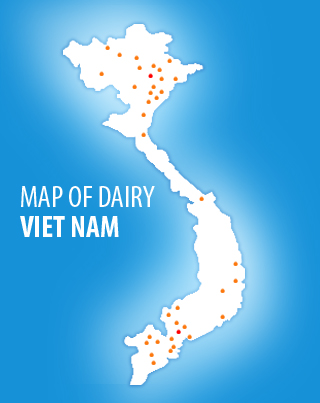The solution for medium and large scale farms
Ruminal Response To Yea-Sacc During Experimentally Induced Acidosis

Objective
To investigate the effects of Yea-Sacc®1026 (live cultured Saccharomyces cerevisiase) on experimentally induced rumen acidosis in high producing dairy cows.
Materials and methods
Animals- Eight Holstein cows in the second month of lactation (~ 40 kg/d)
- Two treatment groups of four cows each
- Treatments were fed for three weeks before inducing rumen acidosis.
- Acidosis induced by a single, two-kg dose of sucrose via a rumen probe two hours after morning meal.
- Control – maize silage, clover-grass silage, high moisture corn, sugar beet pulp, cut straw, concentrate and mineral- vitamin premix (TMR: 52 per cent DM, 17.8 per cent CP, 7.1 MJ NEL/kg DM)
- YS – control + Yea-Sacc®1026 (Alltech Inc.) 20 g/cow/day Measurements
- Cows were monitored for the health status and TMR intake.
- Rumen fluid was withdrawn at zero hours (before sucrose administration) and three, six, nine, 12, 24 and 48 hours thereafter. Fluid was analysed for pH, NH 3, VFA, percentages of acetate, propionate, butyrate and lactate.
- Cows were monitored for the health status and TMR intake.
- Rumen fluid was withdrawn at zero hours (before sucrose administration) and three, six, nine, 12, 24 and 48 hours thereafter. Fluid was analysed for pH, NH 3, VFA, percentages of acetate, propionate, butyrate and lactate.
- Differences between means were evaluated using Student’s t-test.
Results
- Appetite to ingest TMR returned seven hours after acidosis was induced in YS cows and after nine hours in controls.
- Ruminal fluid pH decreased gradually. Within six hours, the pH value dropped under six in all cows. The pH drop was greatest (P<0.01) for controls. By the ninth hour post administration pH had slightly improved such that mean pH was 6.01 for the YS group, compared with 5.6 for the controls. At 24 and 48 hours post administration, pH remained higher (P<0.01) in YS cows compared with the control (Figure 1; Table 1).
- VFA levels dropped rapidly with progressing acidosis in both treatment groups. At 12 and 24 hours, VFA concentrations in the YS group were higher (P<0.05) compared with the control (Table 1).
- Lactate levels underwent the most pronounced change. Initial levels were low, but they these increased sharply during acidosis (Figure 2; Table 1). In the Yea-Sacc®1026 group, lactate levels remained lower (P<0.05) 48 hour post administration.
Conclusion
Yea-Sacc®1026 supplementation in high producing dairy cows favorably affected fermentation processes in the rumen and mitigated experimentally induced acidosis.
Source: The dairy site
User Comments
Other article





















